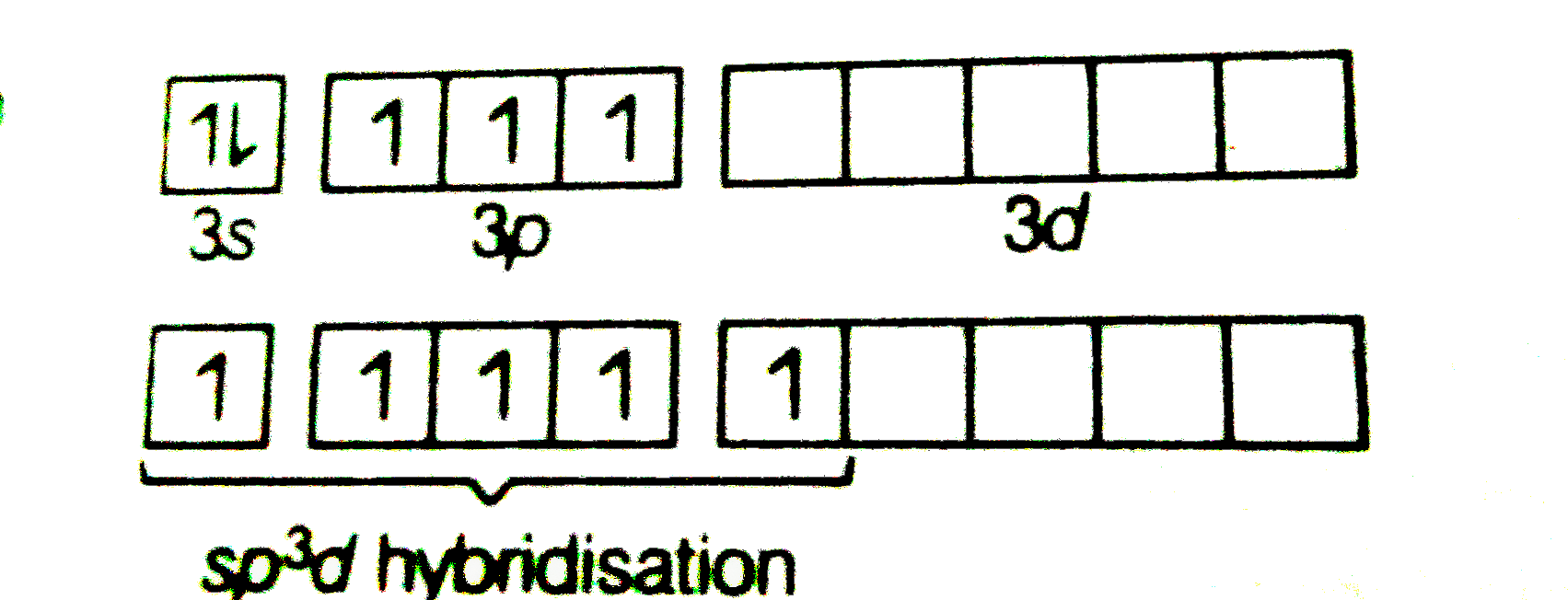Describe hybridisation in the case of PCl5andSF6 The axial bonds are longer as compared to equatorial bonds in PCl5 whereas in SF6 both axial bonds and equatorial bonds and have the same bond length. Explain.
Formation of PCl5

In PCl5, phosphorous is sp3d hybridised to produce a set of five sp3d hybrid orbitals which are directed towards the five corners of a triagoal bipyramidal. These five sp3d hybrid orbitals overlap with singly occupied p-orbitals of Cl-atoms to form five P-Cl sigma bonds.

Three P-Cl bonds lie in one plane and make an angle of 120∘ with each other. These bonds are called equatorial bonds. The remaining two P-Cl bonds one lying above and other lying below the plance make an angle of 90∘ with the equotorial plane.
These bonds are called axial bonds. Axial bonds are slightly longer than equatorial bonds bcecause axial bonds pairs under more repulsive inetraction from the equatorial bond pairs.
Formation of SF6

In SF6, sulphur is sp3d2 hybridised to produce a set of six sp3d2 hyrbrid which are directed towards the six corner of a regular octahedron. These six sp3d2 hyrbid orbitals overlap with singly occupied orbitals of fluorine atoms to form six S-F sigma bonds.
Thus, SF6 molecule has a regular octahedral geometry and all S-F bonds have same bond length.
Related Playlists
- BOOK - NCERT EXEMPLAR ENGLISHCHAPTER - CHEMICAL BONDING AND MOLECULAR STRUCTUREEXERCISE - Assertions and Reasons3videos
CHEMICAL BONDING AND MOLECULAR STRUCTURE
- BOOK - NCERT EXEMPLAR ENGLISHCHAPTER - CLASSIFICATION OF ELEMENTS AND PERIODICITY IN PROPERTIES.EXERCISE - Long answer types question7videos
CLASSIFICATION OF ELEMENTS AND PERIODICITY IN PROPERTIES.
Similar Questions
Describe the hybridisation in case of PCI5. Why are the axial bonds longer as compared to equatorial bonds?
View SolutionHow many equitorial bonds are there are in PCl5 ?
View SolutionNumber of chlorine atoms which form equatorial bonds in PCl5 molecule are _
View SolutionNumber of right angle bonds in PCl5 is _______.
View SolutionAssertion : In trigonal bipyramidal structure two axial bonds are longer than the equatorial bonds.
Reason : Axial bonds suffer more repulsion as compared to equatorial bonds.View SolutionExplain the structures of PCl5 and SF6 with in the framework of octet rule.
View SolutionExplain the bond lengths of all P-Cl bonds in PCl5 molecule.
View SolutionAssertion :-The o-bond is stronger as compared to a π-bond.
Reason :-The axial overlapping of atomic orbitals is much more as compared to their sidewise overlapping.View SolutionAll possible bond angles in anionic part of PCl5 are
View SolutionStatement-1 : PCl5 has trigonal bipyramidal shape .
and
Statement-2 : Length of all P-Cl bonds in PCl5 is equalView Solution


